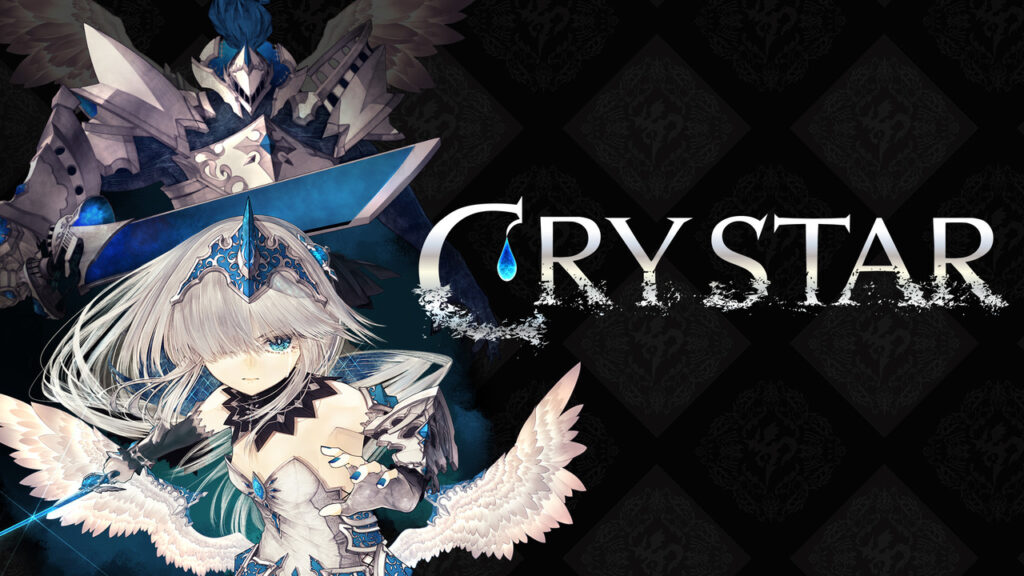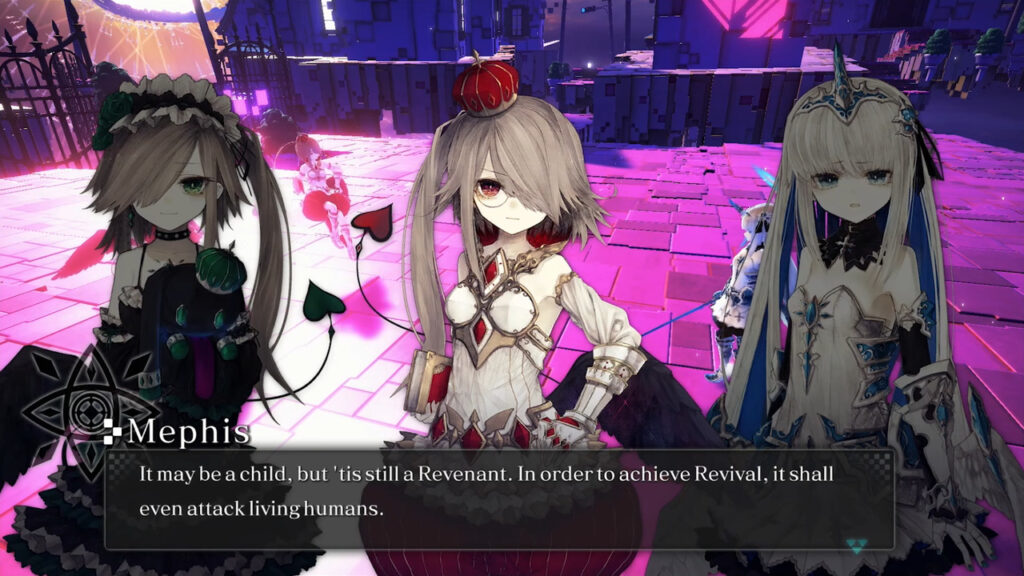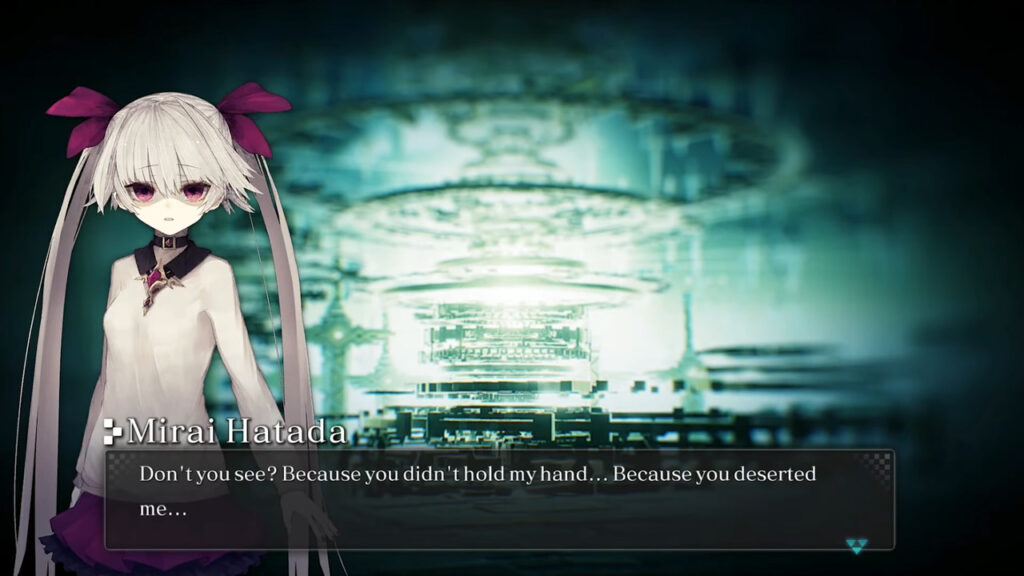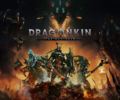
Developer: FuRyu
Publisher: NIS
Platform: PC, PS4, Switch
Tested on: Switch
Crystar – Review
It’s been over three years since Crystar debuted on PC and PlayStation, and although the game has cemented itself in the hearts of a niche fanbase, it still flew under many a gamer’s radars. NIS took over publishing duties from Spike Chunsoft to give FuRyu’s afterlife-themed JRPG a new lease on life on Nintendo’s Switch. Boasting a gorgeous art style and a rather intriguing story trailer, Crystar certainly knows how to draw attention to itself, but can it deliver?
Story
If we have to name a single reason as to why we would recommend picking up Crystar, then it would be to see this dark and gripping tale unfold before your eyes. Admittedly, a quick warning wouldn’t be out of place here: Crystar’s tale is a dark one. The game doesn’t shy away from tackling sensitive topics like abuse or suicide. It does treat these subjects with the necessary gravitas, and the emotional impact of the events that make up Crystar’s narrative shouldn’t be underestimated. It’s a tale about despair and desolation, but also one about love, and the beauty that can be found within sadness. It’s not entirely devoid of humor, however, thanks to its diverse cast of likable supporting characters. Admittedly, we say diverse even though almost all of the cast members take on the form of teenage girls. In our defense, each of them has a well-defined personality with specific characteristics. But before we get ahead of ourselves, we should briefly explain Crystar’s premise.
The opening sequence introduces us to our protagonist, Rei Hatada, as well as her younger sister Mirai. The pair find themselves in Purgatory, surrounded by the souls of the recently deceased, manifesting as glowing butterflies. After Rei inadvertently kills Mirai, she strikes a Faustian deal with Mephis and Pheles, the demons responsible for overseeing Purgatory: in exchange for cleaning up Purgatory by dealing with some of the afterlife’s seedier residents, Mirai will be brought back to life. It’s the beginning of a journey through an otherworldly land, which eventually leads Rei to discover how she ended up in Purgatory herself in the first place.
Graphics
Keeping in mind that this is an older PS4 title, Crystar is surprisingly impressive from a graphics perspective. This is in part due to the gorgeous art design, which hides some of the game’s lesser visual fidelity, but also thanks to the otherworldly setting of Purgatory, which gave the designers a massive amount of freedom to create environments that feel alien yet familiar. The contrast with MONARK, which is a more recent release from the same development team, is jarring: gone are the janky character models and empty feeling world. Crystar is a visual triumph, not because it looks particularly impressive but because it knows where its limitations lie, and it works around them. The gorgeous character illustrations in particular do a fantastic job of conveying character emotions and the cutesy designs make the dark subject matter a whole lot more palatable.
Sound
We’re probably going to ruffle a few feathers with the following statement, but the English dub for Crystar is fantastic, to the point where we didn’t even bother with checking whether or not Japanese audio was included. Brianna Knickerbocker, whom you may know from her role as Corneria in Atelier Sophie, knocks it out of the park as Rei. Crystar also boasts a fantastic OST that perfectly fits the atmosphere. A special mention should go to the intro theme, which marries typical anime music with metal. Not everything is perfect when it comes to the audio though: in combat, there is an odd glitch that cuts off character lines halfway during combo attacks, which was a little jarring. It’s a good thing that these are the standard lines that are repeated ad infinitum while attacking and not lines that are relevant to the story.
Gameplay
If there is one thing that is holding Crystar back from reaching true greatness, then it is the gameplay itself. There isn’t anything inherently wrong with it, but this dungeon-crawling JRPG just feels very basic. You’ll spend roughly 80% of your time with Crystar running through multi-level dungeons and engaging with enemies, which you’ll need to take down in hack-and-slash combat. In between dungeons, you’ll spend time in Rei’s bedroom, which acts as a hub area of sorts. Here, you can listen to music, change character outfits (with the Switch version also including the DLC costumes), and interact with Rei’s dog companion. Everything here is polished and functional, but it’s nothing we haven’t seen before and because of this, Crystar’s gameplay doesn’t feel all that exciting.
The main gimmick revolves around Rei’s tears (hence the title Crystar), which are the key to accessing new combat skills. During her dungeon crawls, Rei and her friends will collect so-called Torments by killing Revenants. These Torments act as debuffs as long as they are not purified. By purifying Torments through tears, they are turned into Sentiments, which are the main resource for unlocking new skills and gear. This mechanic acts as a thinly-veiled metaphor for grief and emotional recovery. It’s a decent enough system, though it does feel a bit convoluted once you start including Thoughts, which are a different kind of enemy drop. These can be fused with Sentiments, and the result will be a randomly generated buff. Because the bonus is random, you might find yourself having to grind Thoughts in order to obtain the buff you really want. Granted, Thoughts can be purchased with in-game currency as well, but they are ridiculously expensive, meaning you’ll need to grind either way unless you get lucky early on.
As for the combat itself, although it isn’t completely devoid of depth, we still weren’t fans of how the fighting mechanics worked. The core idea is that different enemies will soak up different amounts of damage, and the key lies in targeting weaker foes first, as you build up your combo and gain skill points (SP). Once you’ve filled your SP meter, you can then summon a guardian, which will unleash devastating attacks. Building up a decent combo can be quite frustrating and while combo animations play out, your party members will not dodge enemy attacks. The issue is that you’ll be spending a ridiculous amount of time in combat, but that the overall system isn’t deep or engaging enough to keep your attention. Combat quickly grows stale and starts to feel like a repetitive grindfest. Combined with the sheer length of the dungeons, we found ourselves having to take the game on one dungeon at a time, with different games as palette cleansers in between, rather than binge our way through it.
We’ve taken a look at more than one Switch release by NIS, and based on these previous titles, we were expecting Crystar’s technical performance to be underwhelming. As it turned out though, Crystar felt a lot more optimized compared to titles like The Caligula Effect 2 or Poison Control. We never noticed any frame rate issues or slow down, even when there was a lot of action happening on screen, or when we unleashed various SP attacks in succession. While Crystar only runs at 30 fps rather than 60, it was still refreshing to see how well a game like this can perform, and the contrast with something like Chrono Cross was baffling. Here’s hoping that future releases by NIS will either match the standard that the Crystar port has now set, or that they’ll be able to consistently improve performance from this point on.
Conclusion
While we wouldn’t go as far as to call Crystar an essential addition to anyone’s library, this is definitely a game worth looking into. It’s best enjoyed in short bursts rather than playing through it in a single weekend. The clear highlight here is the narrative, which touches upon difficult themes and ends up being a heartbreaking tale about the beauty that can be found in grief. Performance-wise, Crystar is by far the best title NIS has brought to the Switch. It’s a shame that the gameplay itself doesn’t quite live up to the standard that Crystar has set for itself with its story, visuals and audio, but the good definitely outweighs the bad here.
2 Comments
Leave a Reply
You must be logged in to post a comment.










[…] a thrilling new action RPG published by NISA. Developed by FURYU Corporation, the studio behind CRYSTAR, the game introduces players to a post-apocalyptic realm, where the destiny of humanity hangs in […]
[…] successor, CRYMACHINA is very much its own separate experience that has no real relation to Crystar, safe for a few of the heavier topics both games address. The early footage of this new futuristic […]